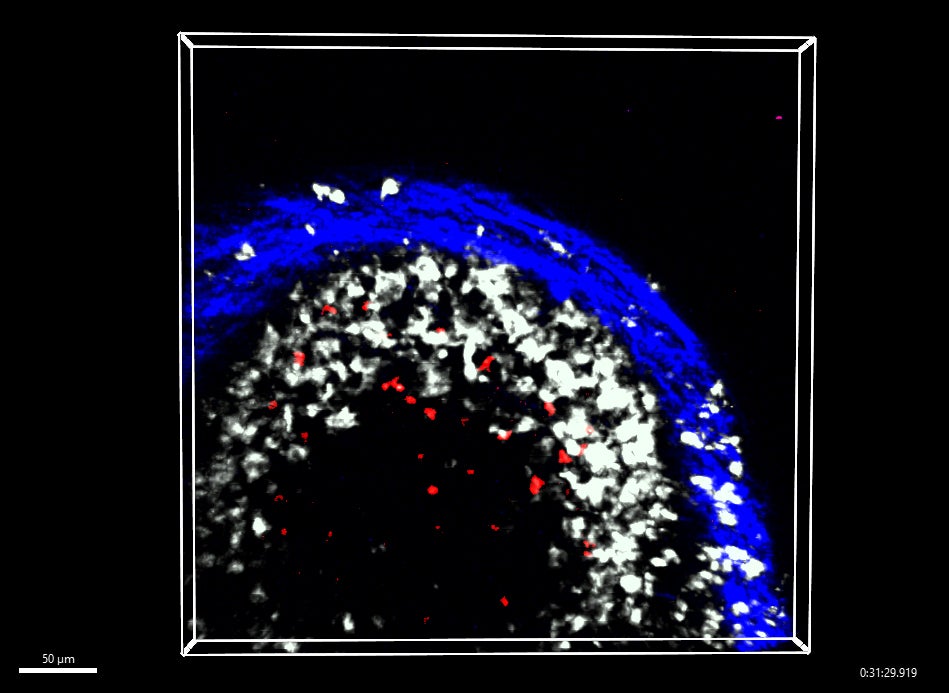Vaccines are always best in the same arm.

When it comes to getting vaccinated, most people prefer one arm over the other. This decision, which at first seems trivial, is more important than previously thought.
According to a team of Australian scientists, administering a booster vaccine in the same arm as the initial dose can trigger a faster and more effective immune response.
The discovery, published in the journal ' Cell ', could transform vaccination strategies in the future.
The study showed that vaccinating in the same location activates specialized immune cells called macrophages in nearby lymph nodes, paving the way for memory B cells to respond more efficiently to a booster.
"This is a fundamental discovery about how the immune system organizes itself to best defend us," explains Professor Tri Phan, director of the Precision Immunology Program at the Garvan Institute of Medical Research and the Kirby Institute at UNSW Sydney and co-senior author of the study.
Anthony Kelleher, director of the Kirby Institute and also co-senior author, highlights the study's unique approach: "We broke down the complex biology in mice and then confirmed the results in humans, directly in the lymph node where the vaccine response is generated."
When a vaccine is administered, the antigen filters through the lymph nodes, which act as immune "training grounds." Previous research already indicated that memory B cells remain in the lymph node closest to the injection site. Using advanced intravital imaging technology, scientists observed that these cells position themselves alongside local macrophages, ready to act more quickly if the booster is administered in the same area.
"Macrophages not only eliminate pathogens and dead cells, but also coordinate faster and more effective vaccine responses in nearby lymph nodes," says Rama Dhenni, co-author of the study.
To validate the findings in people, a clinical trial was conducted with 30 volunteers who received the Pfizer-BioNTech mRNA COVID-19 vaccine. Twenty of them received the booster in the same arm, while the other ten received it in the opposite arm.
 Memory B cells (red) interacting with macrophages (white) and lymph nodes (blue)
Dr. Rama Dhenni
Memory B cells (red) interacting with macrophages (white) and lymph nodes (blue)
Dr. Rama Dhenni
"Those who received both doses in the same arm generated neutralizing antibodies against SARS-CoV-2 more quickly, as early as the first week after the booster," explains Alexandra Carey-Hoppé , co-author of the study. Furthermore, their antibodies proved more effective against variants such as Delta and Omicron.
Although both groups reached similar antibody levels after four weeks, Mee Ling Munier emphasizes the importance of early protection: "In the midst of a pandemic, those first few weeks of accelerated immunity can be crucial in slowing the spread of the virus."
Beyond COVID-19, researchers see enormous potential in these findings. "If we can replicate or enhance the interaction between memory B cells and macrophages, we could design more potent vaccines that require fewer booster doses," Professor Phan concludes.
This breakthrough opens new avenues for optimizing vaccination campaigns and improving the global response to future pandemics.
However, Jaime Jesús Pérez Martín, a public health expert and president of the Spanish Association of Vaccinology (AEV), criticizes the study's use of "expected vaccine efficacy" based on antibody titers, as efficacy against COVID cannot currently be predicted based on these data alone.
And, he adds to SMC, although it provides immunological innovations, "its practical relevance is limited." He refers to other studies, such as one published in The Journal of Clinical Investigation , which have shown contradictory and statistically more robust results (due to their size), demonstrating that the topic still lacks conclusive evidence.
Furthermore, he emphasizes that "a stronger immune response does not always imply better clinical protection."
abc





